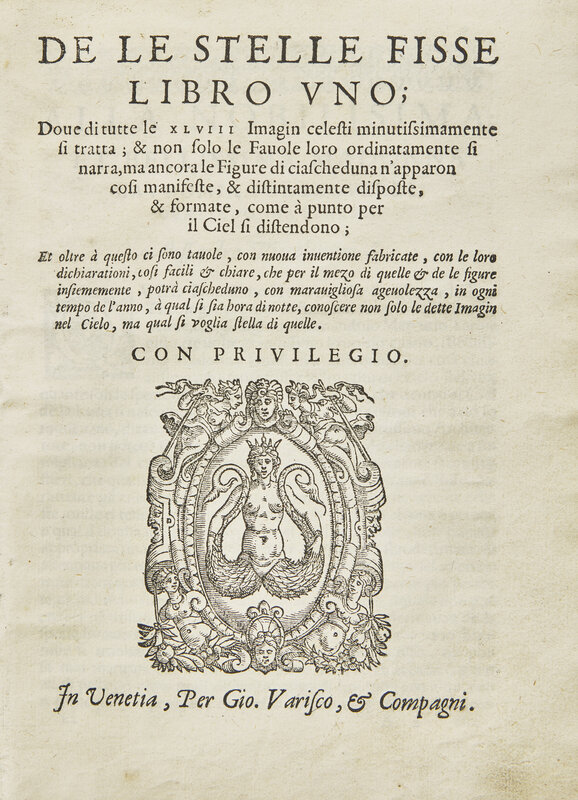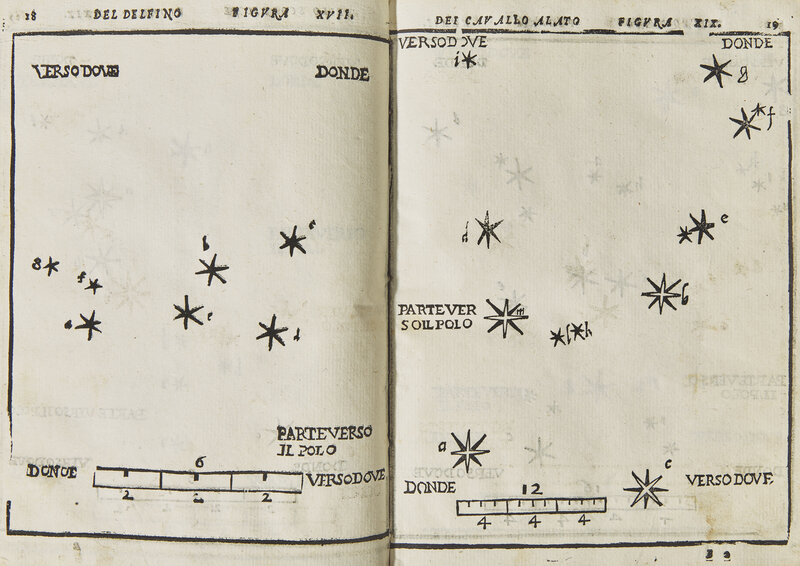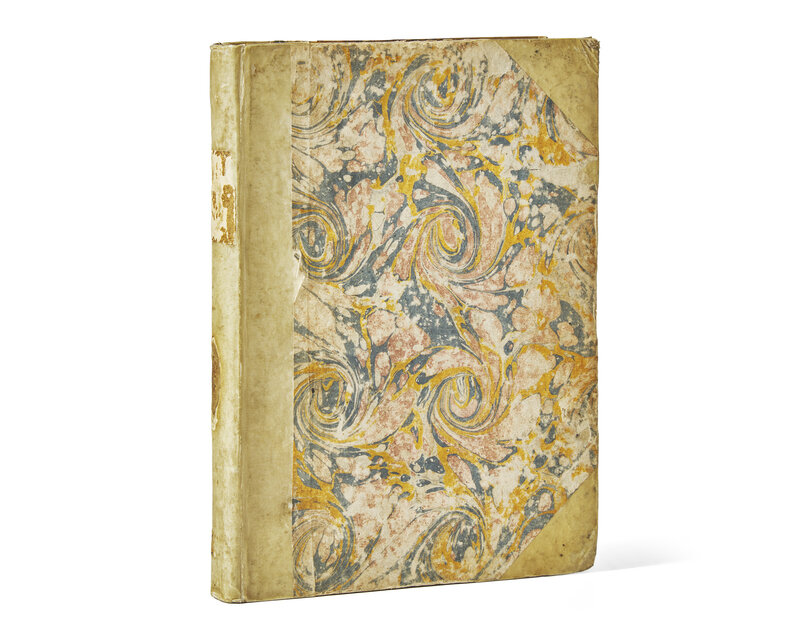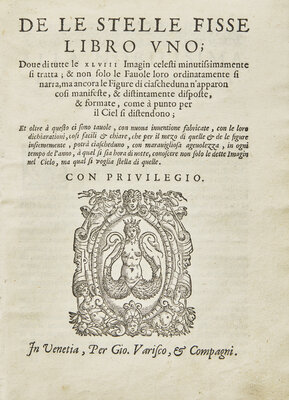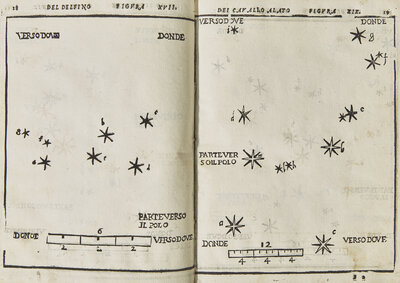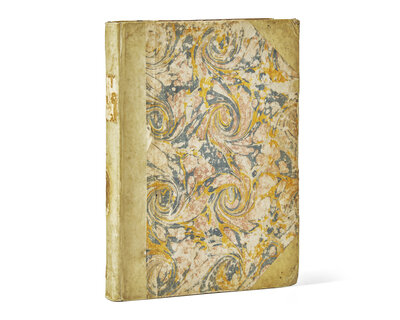[Science, Medicine & Mathematics](Piccolomini, Alessandro): De le Stelle Fisse Libro Uno...
Sale 2101 - Books and Manuscripts
Sep 10, 2024
10:00AM ET
Live / Philadelphia
Own a similar item?
Estimate
$1,000 -
1,500
Price Realized
$1,270
Sold prices are inclusive of Buyer’s Premium
Lot Description
[Science, Medicine & Mathematics] (Piccolomini, Alessandro). De le Stelle Fisse Libro Uno; Doue di tutte le XLVIII Imagin celesti minutissimamente si tratta; & non solo le Fauole loro ordinatamente si narra, ma ancora le Figure di ciascheduna n'apparon cosi manifeste, & distintamente disposte, & formate, come a punto per il Ciel si distendono
Venice: Per Gio(vanni). Varisco, & Compagni, no date (ca. 1559-72). 8vo. ff. 32 (but 30); 48 pp.; ff. 25-93; (6) pp. With woodcut printer’s device on title-page, 47 woodcut star charts, and calendrical tables. Later three-quarter vellum over marbled paper-covered boards, remnants of paper and morocco spine labels, boards rubbed and lightly worn, gash in lower spine; all edges trimmed; scattered light spotting to text. From the library of Owen Gingerich (1930-2023), Harvard Professor of Astronomy and rare book specialist in the history of science; with a typed letter to him regarding the dating of this volume, laid in. Adams P-1108; BEA, pp. 904-05; CNCE 41170; Cozzoli, "L'Ouvre astronomique d'Alessandro Piccolomini," in Alesandro Piccolomini: Un siennois à la croisée des genres et des savoirs, Université la Sorbonne Nouvelle, p. 235-244; Edit16 40890; Goldschmidt 148; Honeyman 2477; Houzeau & Lancaster 2491; Norman 1696; Riccardi 269, 270; Robin, Publishing Women, pp. 136-138; Sotheran I, 3625; Warner, p. 200
Alessandro Piccolomini's classic 16th-century astronomical text: the first book with a printed celestial atlas, profusely illustrated with woodcuts.
This undated edition was likely printed between 1559 and 1572, but is not the 1561, 1564, or 1570 editions. Gingerich posited 1564 as a date for this example, but to judge from other title-pages of the same year, that is probably incorrect.
De le Stelle Fisse is a landmark book of science, drawing on traditional Ptolemaic-Aristotelian geocentric cosmography. It was not meant to be a university textbook, but rather a text for self-study (Cozzoli). As Norman writes, "Piccolomini was one of the first popularizers of science who wrote his astronomical treatises in the vernacular to extend scientific knowledge beyond the confines of the church and the university." For the first time, stellar representations are identified by a Latin letter and classified according to four magnitudes of brightness; they are in their true positions, without the undergirding of mythological figures. Piccolomini depicts all of the Ptolemaic constellations, except the Horse. "De le Stelle Fisse represents the first printed star atlas, containing maps of the stars as opposed to simple pictures of constellations in works like Hyginus, and introduces the practice of identifying stars by letter, a method later adopted and expanded by Johann Bayer" (Norman), and through Bayer, all modern astronomers. De le Stelle Fisse became a fundamental work of early astronomy, which had profound implications for the developing art of navigation, in part because Piccolomini's star charts always indicate the position of the North Pole.
Piccolomini was spurred to produce De le Stelle Fisse due to his unrequited love for the aristocratic Sienese lesbian poet Laudomia Forteguerri; where he dedicates the work to her in the text no fewer than three times. Forteguerri had remarked to Piccolomini her regret that, as a woman, she was not allowed to study astronomy. He wrote this text in the vernacular and in a manner meant to be understood by a non-specialist, in part for her to better understand the material. Piccolomini's aim was to allow Forteguerri to be able to easily observe the position of all the stars throughout the year (Cozzoli). Piccolomini's clear and methodical exposition of Renaissance astronomical knowledge was also, in part, an attack against the rampant popularity of astrology.
De le Stelle Fisse was such a success that after its initial printing in Venice in 1540, it went through at least eleven editions before the end of the sixteenth century.
This lot is located in Philadelphia.
Condition Report
Auction Specialist
